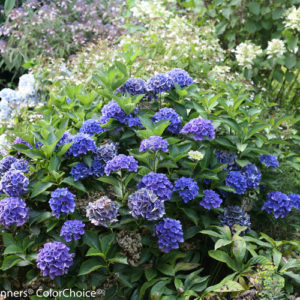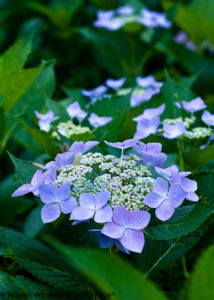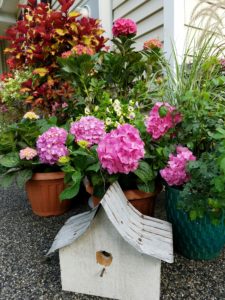Getting mophead Hydrangeas to bloom
 I finally cracked the secret for having lush blue or pink mophead hydrangeas in Zones 5 and 6 – and I’m not talking silk flowers. I had to downsize my expectations – not about size or number of flowers but the mature height of the hydrangea. So instead of varieties like ‘Endless Summer’ and ‘Nikko Blue’, I am opting for shorter specimens (3’ or less) like those in the Cityline (‘Venice’ pictured at right) or Let’s Dance series.
I finally cracked the secret for having lush blue or pink mophead hydrangeas in Zones 5 and 6 – and I’m not talking silk flowers. I had to downsize my expectations – not about size or number of flowers but the mature height of the hydrangea. So instead of varieties like ‘Endless Summer’ and ‘Nikko Blue’, I am opting for shorter specimens (3’ or less) like those in the Cityline (‘Venice’ pictured at right) or Let’s Dance series.
To understand my strategy, you need to know that mophead and lacecap Hydrangeas (in the macrophylla species) form their flower buds late summer or fall, the year before they are SUPPOSED to bloom (think Forsythia, Lilac, Rhododendron, Azalea). Unfortunately, in colder zones these flower buds are subject to being destroyed by bitter temperatures and winds. Bummer.
 By electing for shorter shrubs, the flower buds are closer to the ground, more likely to be out of the path of strong winter winds. Plus if there is limited snowfall (snow is a great insulator), whatever snow there is will hopefully blanket the Hydrangea’s tender buds. I’ve thought about using rose cones (or similar protection devises) to put over the shrubs after they’ve gone dormant. (Hydrangea Let’s Dance ‘Starlight‘)
By electing for shorter shrubs, the flower buds are closer to the ground, more likely to be out of the path of strong winter winds. Plus if there is limited snowfall (snow is a great insulator), whatever snow there is will hopefully blanket the Hydrangea’s tender buds. I’ve thought about using rose cones (or similar protection devises) to put over the shrubs after they’ve gone dormant. (Hydrangea Let’s Dance ‘Starlight‘)

